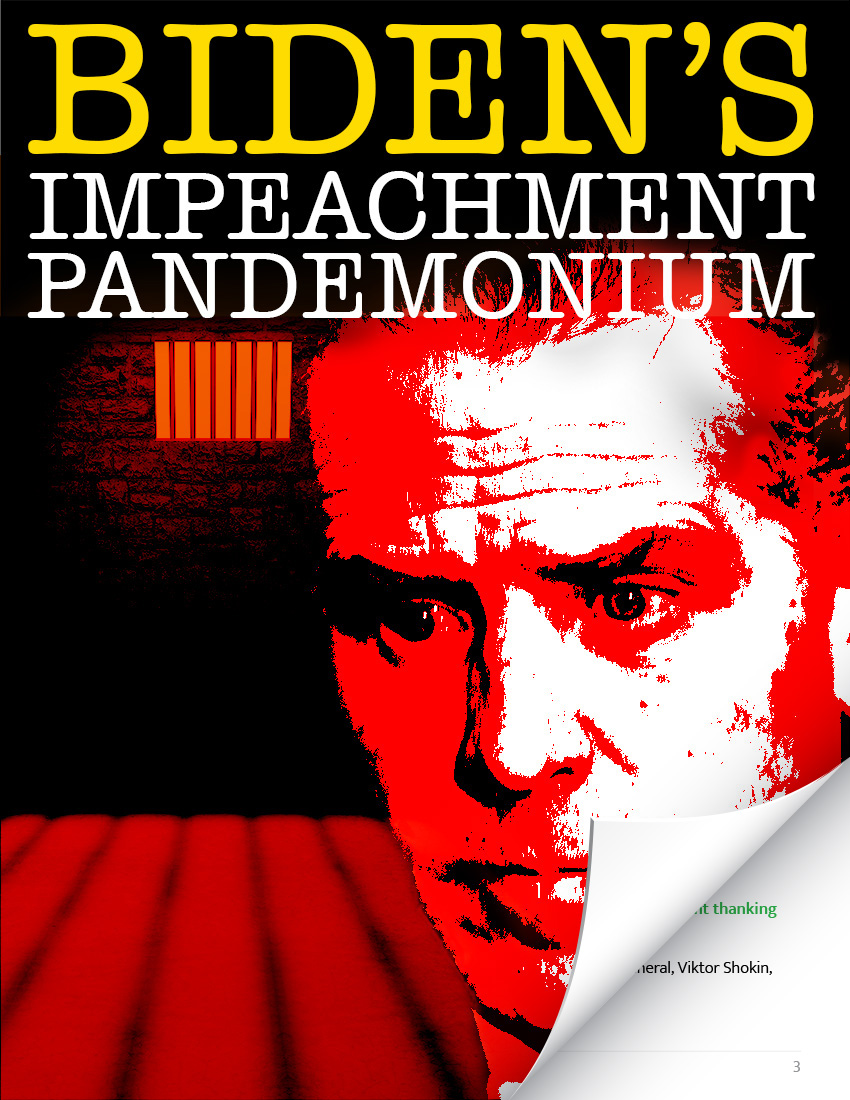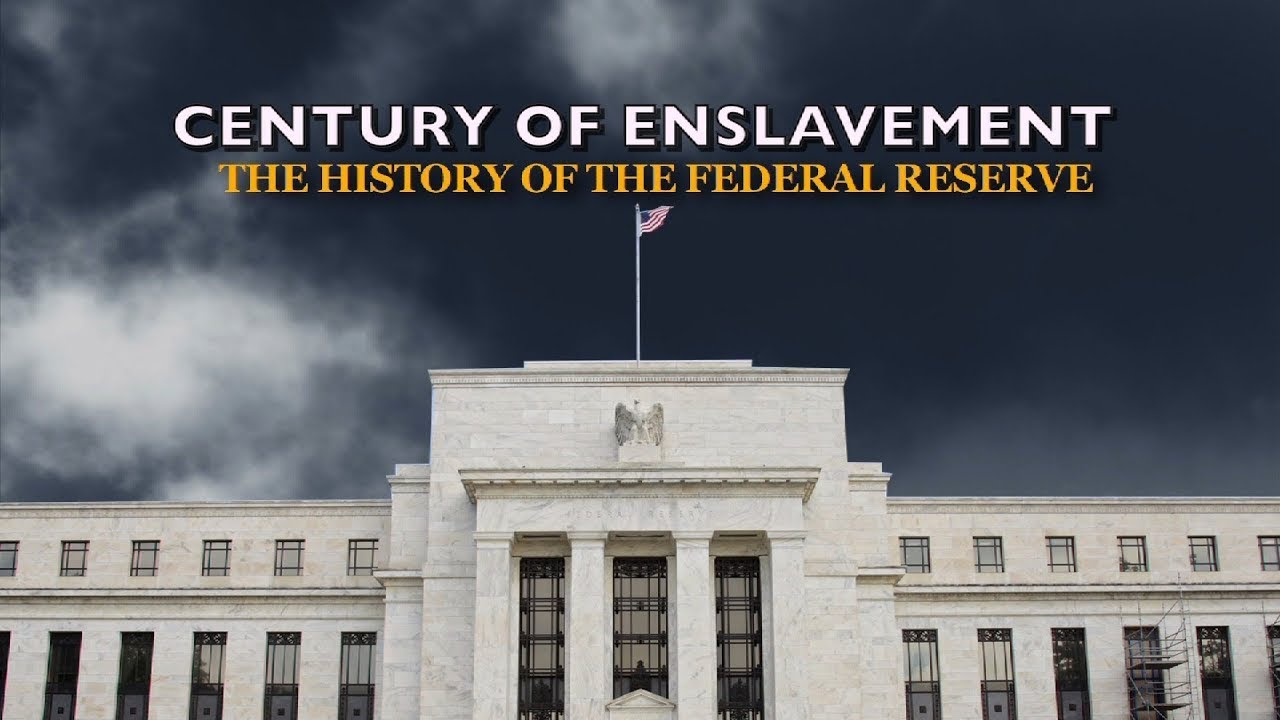
TRUMP SAYS: HUNTER MAKES FORTUNE FROM SHADY DEALS!
BIDEN FAMILY STINKS TO HIGH HEAVENS OF CORRUPTION!
DON'T GET LEFT OUT: HUNTER MUST BE STOPPED!

This article was originally published by Mike Holly at The Mises Institute.
The conditions have now aligned for a repeat of the major stock market crashes that have occurred since the founding of the US Federal Reserve Bank (Fed) in 1913. Considering their vast experience and resources, the Fed has to know that their plan to control inflation by raising interest rates rapidly and significantly since 2022, and also tightening credit this year, will likely result in another major crash. Although the Fed has issued vague warnings about the impending pain on the stock market and economy, they have not explained how and why they will again wipe out trillions of dollars of wealth of unsuspecting investors.
As Marty Zweig, a successful Wall Street investment adviser known for data studies, warned, “Don’t fight the Fed,” because the central bank largely controls the direction of the stock markets. Generally, the major stock market booms start with the Fed stimulating slow economic growth by lowering interest rates, often while the government increases deficit spending. As Austrian business cycle theory predicts, this results in asset price inflation (e.g., stocks, houses, etc.), and sometimes also consumer price inflation. The major busts result when the Fed seeks to control inflation by raising interest rates significantly, while the government reduces deficit spending.
The following graphs demonstrate the strong inverse relationship between the Dow stock market index and interest rates largely set by the Fed (i.e., stock values inflate when interest rates are lower and deflate when higher). The top graph from Macrotrends shows the Dow Jones stock market index on a logarithmic scale and adjusted for today’s dollars over time. The bottom graph from the Fed shows interest rates over the same time. These graphs can be used to locate the major stock market cycles and analyze the effects of interest rates along with deficit spending in causing booms and busts.
Figure 1: S&P 500 versus federal funds rate

The Dow Jones stock market can be considered to be in its sixth major boom and bust cycle. The first cycle had a 1913–15 boom and 1915–20 bust. The second cycle had a 1920–29 boom and 1929–32 bust. Then, there was a 1932–50 period that was effectively absent of major booms that could go bust. The third cycle had a 1950–65 boom and 1965–82 bust. The fourth cycle had a 1982–2000 boom and 2000–2002 bust. The fifth cycle had a 2002–7 boom and 2007–9 bust. The sixth cycle had a 2009–22 boom and a bust starting in 2022. The five major stock market crashes can be considered to have started in 1915, 1929, 1965, 2000, and 2007, with another likely in 2022.
1915—As the Fed started cutting interest rates in 1913, the Dow stock market climbed and peaked in 1915. That year, the Fed started raising rates and the stock market dropped in 1916. During 1917 and 1918, deficit spending for World War I, while interest rates were flat, caused rampant inflation and a spike in stock prices. After the war, the Fed rapidly raised interest rates in 1920 to cause a stock market crash and the depression of 1920–21.
1929—After the Fed cut interest rates from 1921 to 1925, the so-called roaring ’20s brought a booming Dow stock market from 1921 to 1929. After the Fed started raising interest rates in 1927, the stock market crashed in 1929 and the economy tanked. During the 1930s, the Fed cut interest rates, but President Franklin D. Roosevelt resisted deficit spending after 1932. The Fed even raised, before lowering, interest rates in 1935 to cause stock market losses and the recession of 1937–38. These policies prolonged the Great Depression until World War II, if not longer.
1965—Deficit spending during World War II, along with low-interest rates during and after the war, helped bring a postwar boom with economic recovery, consumer price inflation, and stock market gains. During the late 1960s and 1970s, the government accommodated inflation by raising interest rates slowly over a relatively long time period. This caused a long, flat stock market with sharply declining real values (due to inflation) from 1965 to 1982. Finally, the Fed raised interest rates rapidly and high around 1978 to cause a severe recession in the early 1980s.
2000—After 1981, the Fed started cutting interest rates and the government increased deficit spending, especially on defense. The stock market boomed. The Fed raised interest rates starting in 1993 and even higher in 1999 to stop what was claimed to be the “irrational exuberance” of the booming stock market, while the US government ran budget surpluses from 1997 to 2001. The stock market, especially tech, crashed in 2000, and the economy receded during the recession of 2001.
2007—In 2001, the Fed started cutting interest rates and loosening credit on home loans while the government increased deficit spending. The stock market boomed back to its prior peak (in 2000) and home prices inflated. From 2005 to 2008, the Fed raised interest rates and the government decreased deficit spending. In 2007, the stock market and home prices crashed. The economy suffered through the Great Recession until 2009.
2022—Since the start of the Great Recession in 2007 and until 2022, the Fed has lowered interest rates to near zero while the government increased deficit spending. This has accommodated asset and consumer price inflation. Since March of 2022, the Fed has quickly raised interest rates by about five percentage points.
Today, the Fed is clearly still concerned about the inflation. However, higher interest rates have already led to a financial crisis among the banks. Experiences with past markets indicate that, if the Fed continues to fight inflation, the stock markets will likely crash, as they did twice in both the early 1900s and early 2000s. If the Fed gives up its inflation fight, the stock market will likely gradually fall in value over many years if not decades, as it did after 1965.
There have been some other large, but less significant, stock market declines. The crashes in 1917, 1941, and 2020 were caused by fears of wars and a pandemic but were soon reversed by lower interest rates and massive deficit spending used to meet the aggression. The crashes of 1937 and 1946 and subsequent recessions were preceded by rising interest rates and limited deficit spending, but 1937 was part of the recovery from the Great Depression while 1946 was soon reversed by the exceptional postwar boom. The crashes in 1968 and 1972 were preceded by rising interest rates and limited deficit spending but occurred within a major crash. The crash of 1987 was preceded by rising interest rates and reduced deficit spending but was a brief and steep up-and-down blip within a major boom.
The graphs indicate that major stock market crashes have always resulted when, and only when, the Fed has responded to inflation by raising interest rates by three percentage points or more, while the government reduces, or at least doesn’t significantly increase, deficit spending. There has never been a so-called soft landing, and the graphs indicate a so-called Fed pivot, which has usually arrived after the crash. The graphs also indicate that the 1915, 1929, 1965, 2000, and 2007 crashes caused Dow stock market index losses of 59, 85, 71, 35, and 49 percent. The losses were not recovered until eleven, thirty, twenty-nine, eight, and six years after the start of the crashes, respectively.
The government has responded to the major stock market crashes, with the exception of 1929, by lowering interest rates and increasing deficit spending to gradually pump stock prices back up and eventually even higher than before. There is no guarantee that this will happen again, especially with the political far right threatening to repeat the policies that prolonged the Great Depression by restricting deficit spending.
Stock markets are unfair to uninformed and amateur investors since they are rigged by the Fed and government without transparency. Informed stock traders and insiders can earn far greater returns by selling stocks high before the stock market crashes. They can also profit by buying low later if they are assured that the government will bail out the market with low-interest rates and deficit spending. Moreover, the stock markets will be unsustainable as soon as most investors realize that they are rigged.
Monetary and fiscal manipulations, currently needed to stimulate stock markets and pull economies out of recessions, should be replaced by something else, like effective deregulation of free markets

It Took 22 Years to Get to This Point
Iowa's Johnson County Health Department is pushing the flu vaccine, claiming that it will prevent...
Most of us have heard of germ theory ad nauseam since the beginning of the COVID-19 scamdemic....
The world's top earners are now worth over a whopping $10 trillion. Last year was witness to an...
Commenting Policy:
Some comments on this web site are automatically moderated through our Spam protection systems. Please be patient if your comment isn’t immediately available. We’re not trying to censor you, the system just wants to make sure you’re not a robot posting random spam.
This website thrives because of its community. While we support lively debates and understand that people get excited, frustrated or angry at times, we ask that the conversation remain civil. Racism, to include any religious affiliation, will not be tolerated on this site, including the disparagement of people in the comments section.


Comments